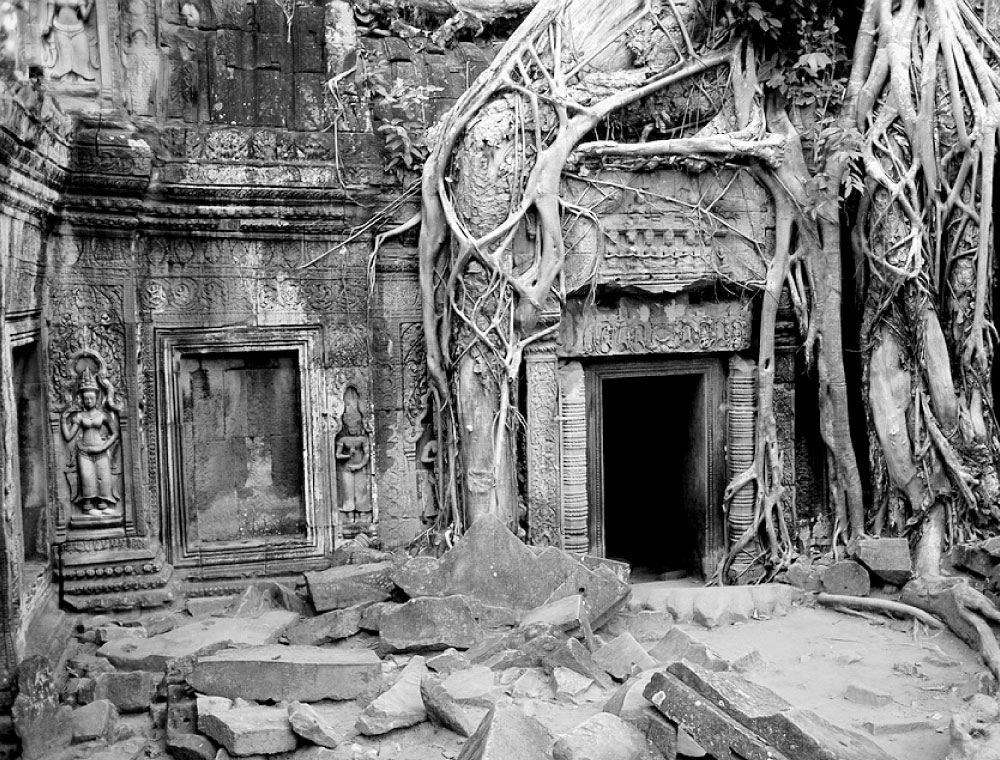WAT EK PHNOM
Ek Phnom is an 11th century Angkorian-era ruin built as a Hindu temple under Suryavarman I. The temple consists of prasats on a platform with some carvings in fairly good condition. Wat Ek Phnom, a modern pagoda, sits next to the ruin. From Battambang, an absolutely beautiful countryside drive passing through small villages and rice paddies to Ek Phnom awaits visitors.
PHNOM BANAN
Phnom Banan is a mountain top, 11th century Angkorian-era ruin consisting of five prasats. It is a peaceful location with a visible view of the surrounding areas. Attractions include L’Ang But Meas cave, and an active long-standing (150+ years) pagoda at the base of the mountain.
PHNOM SAMPOEU
Phnom Sampoeu, steeped in legend, and topped by Wat Sampeou and a group of caves used as “killing caves” by the Khmer Rouge, contains the skeletal remains of victims from the Khmer Rouge period. The wat is unexceptional but the view is spectacular. Please remember to ask about the legend of Neang Rumsay Sok.
BATTAMBANG PROVINCIAL MUSEUM
The Battambang Provincial Museum on the riverfront of the town’s centre houses a large collection of Angkorian and pre-Angkorian artefacts including: statues; carvings; bits of ancient temples; and potteries. It is amongst the best provincial museums.
BAMBOO TRAIN
The bamboo train is a unique and creative form of ad-hoc local transportation. It consists of a small (perhaps 2.5m by 4m), motorcycle engine-powered bamboo cart that runs on the railroad rails picking up and dropping off passengers, cargo, animals, and motorcycles along the way. When it meets on-coming traditional trains or bamboo trains, it may be disassembled and removed from the rails in a minute or two, thus allowing traffic to pass. When touring the countryside, please ask your driver to drop by a bamboo train at a rail crossing and enjoy a ride.
THE PHARE PONLEU SELPAK
The Phare Ponleu Selpak (NGO) gives Cambodian children from poor and disabled families the opportunity to “access culture via different artistic activities” including music, drawing, drama, dance and circus performance. The centre offers traditional Cambodian circus shows each Thursday evening.
BOENG KAMPING PUOY RESERVOIR
Located 35km from the province, Kamping Puoy reservoir is another must-see site in Battambang. It is an interesting dam and irrigation system constructed during the Khmer Rouge period.
PHTEAS TOEUK DAUNG (LA MAISON DE COCO)
Phteas Toeuk Daung (La Maison de Coco) is the local NGO that provides vulnerable Cambodian children with vocational trainings like sewing, cooking and carpentry. The products made by these children are displayed and sold to both tourists and the centre’s restaurant.
LOCAL PAGODAS
Both Battambang town and the neighbouring countryside are surrounded by many pagodas, some of which are ancient and highly respected.
